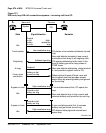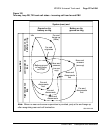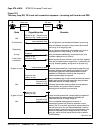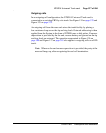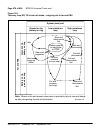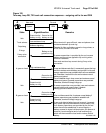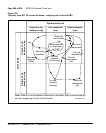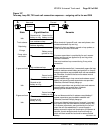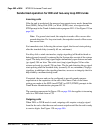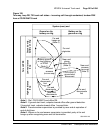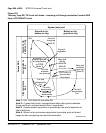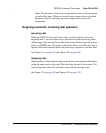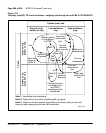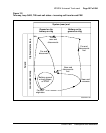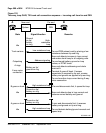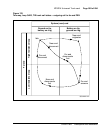
Page 582 of 894 NT8D14 Universal Trunk card
553-3001-211 Standard 2.00 September 2004
Senderized operation for DID and two-way loop DR trunks
Incoming calls
If the far-end is senderized, the near-end can operate in any mode: Immediate
Start (IMM), Delay Dial (DDL) or Wink (WNK) start, as assigned at the
STRI prompt in the Trunk Administration program LD 14. See Figure 128 on
page 583.
Note: If a ground start trunk, the outpulse towards office occurs after
ground detection. If a loop start trunk, the outpulse towards office occurs
one second later.
For immediate start, following the seizure signal, the far-end starts pulsing
after the standard delay (normally 65 ms, minimum).
For delay dial or wink start modes, stop/go signaling (off hook/on hook or
battery/ground reversal) is returned by the System after receipt of the seizure
signal. The delay dial (stop) signal begins immediately upon seizure and ends
(go signal) 384 ms later. The wink start (stop) signal begins 384 ms after
seizure and ends (go signal) 256 ms later. The far-end detecting the go signal
starts pulsing after the standard delay (normally 55 ms, minimum). Stop/go
signaling, in addition to the signaling function, serves as an integrity check to
help identify a malfunctioning trunk.
If required, the near-end can be configured to provide pseudo-answer
supervision at the expiration of the end-of-dial timer. End-of-dial timer
settings are made at the EOD (non-DTMF) or ODT (DTMF) prompts in the
Trunk Route Administration program LD 16.
The operation represented in Figure 129 on page 584 also applies to incoming
calls on a DID trunk from a CO.
Outgoing calls
When DDL or WNK mode is used, outgoing calls require a stop/go signal
from the far-end so that the near-end cannot outpulse until the far-end is ready
to receive digits. See Figure 130 on page 586.



